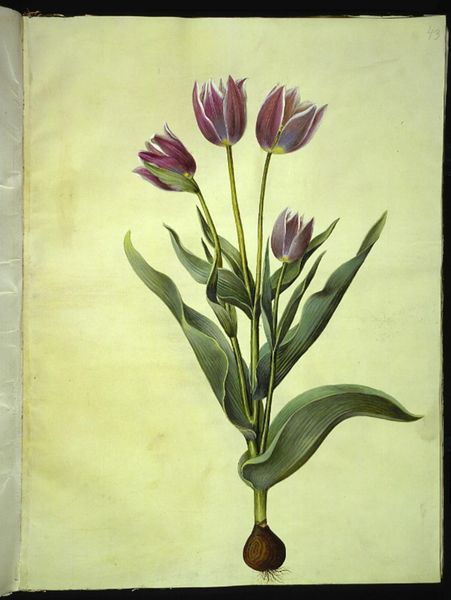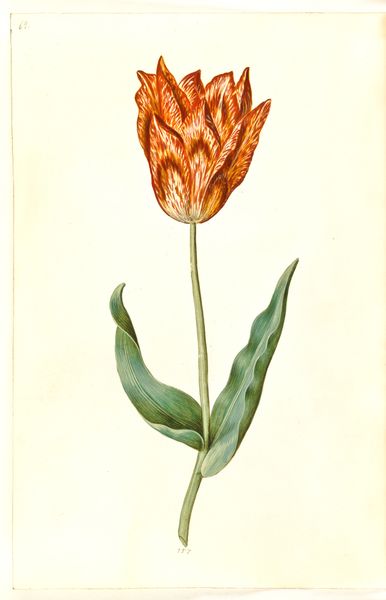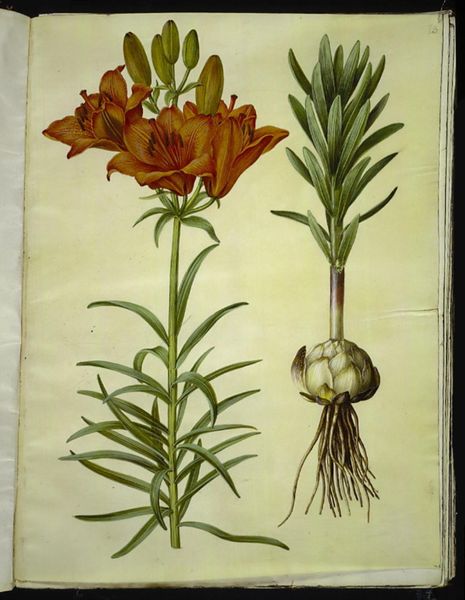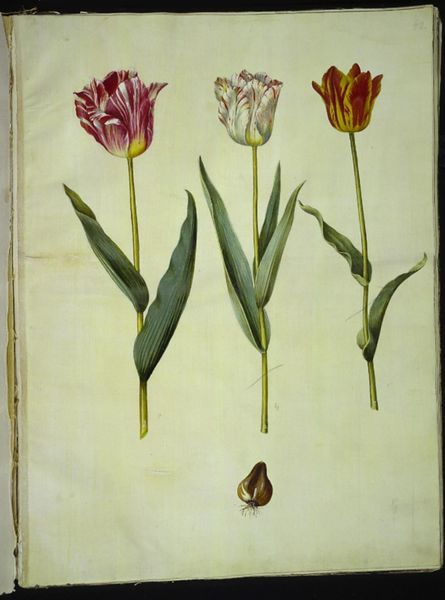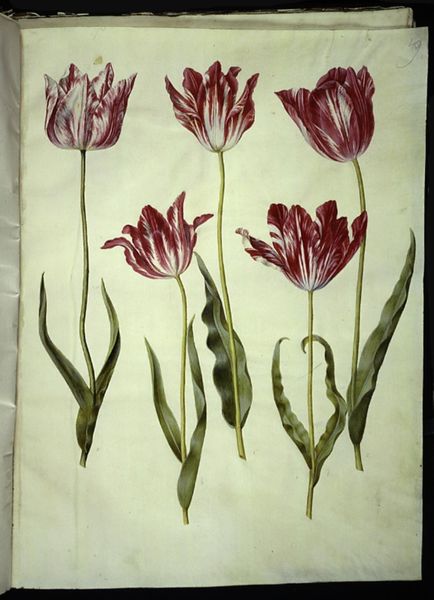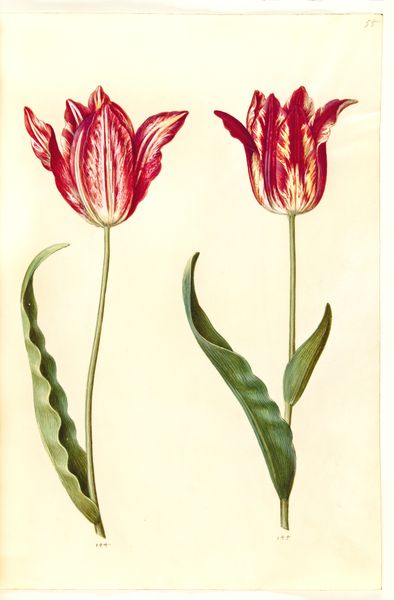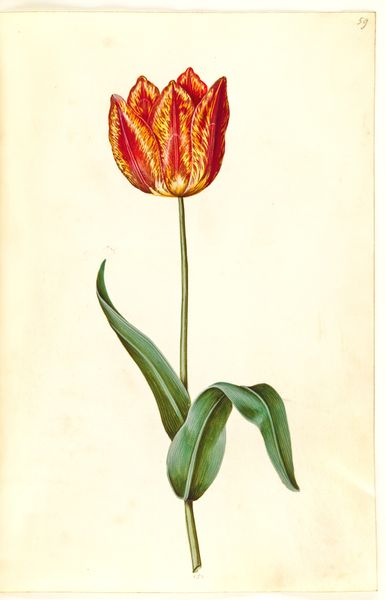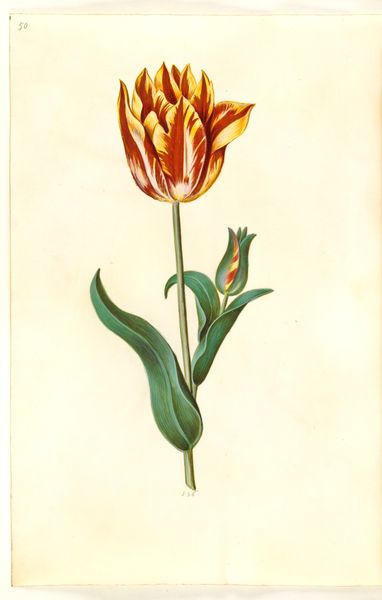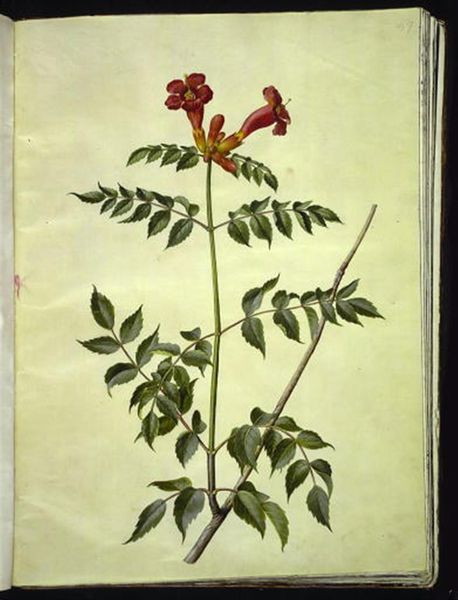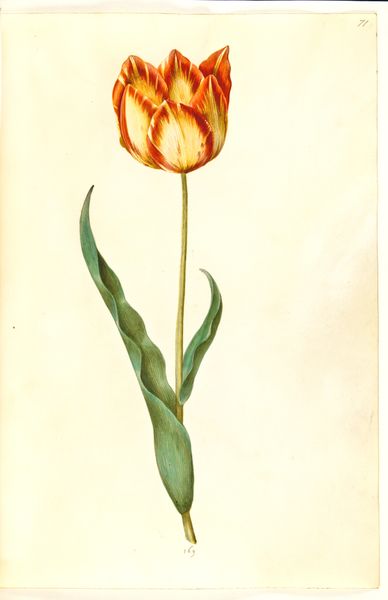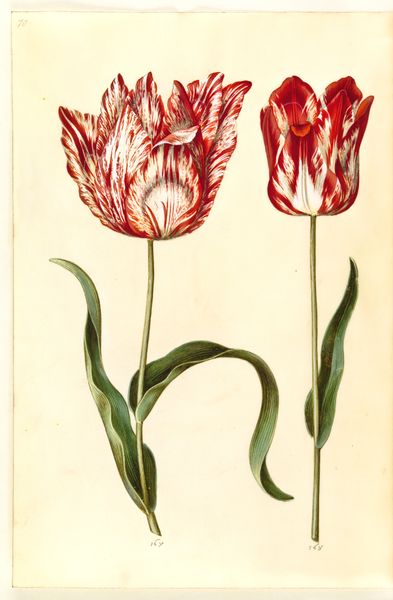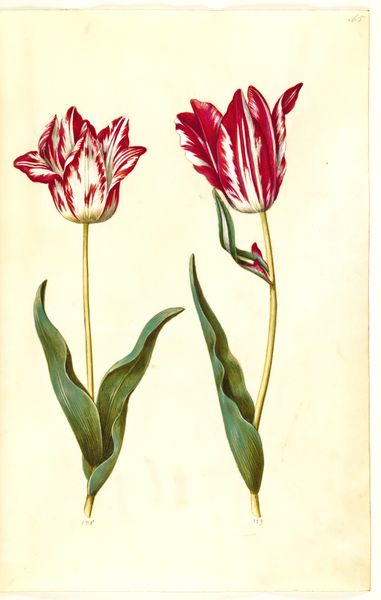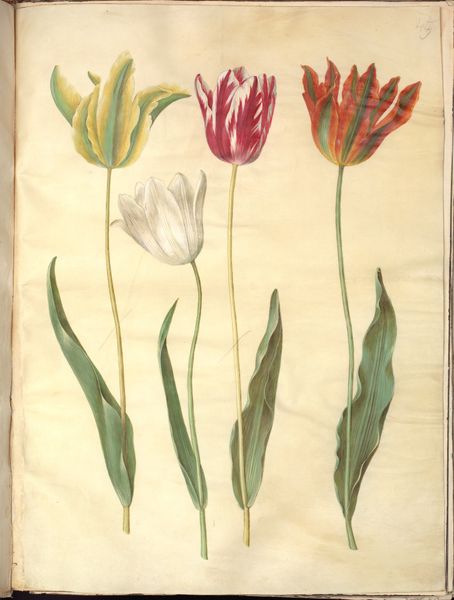
drawing, gouache
#
drawing
#
dutch-golden-age
#
gouache
#
watercolour illustration
#
botanical art
#
watercolor
Dimensions: 505 mm (height) x 385 mm (width) (bladmaal)
Curator: Before us, we have "Tulipa gesneriana," also known as have-tulipan, a botanical illustration crafted between 1649 and 1659. The artist, Hans Simon Holtzbecker, employed both drawing and gouache to capture this striking flower. Editor: It's immediately striking. The form is so meticulously rendered, there's a tangible weight to each leaf. It has an almost photographic quality, despite the inherent artificiality of depicting nature so cleanly on the page. Curator: The controlled, almost scientific depiction of the subject speaks to the values of the Dutch Golden Age, reflecting the era's intense interest in naturalism and the classification of the natural world. Editor: Yes, but beyond scientific precision, I see a keen awareness of the very pigments at play. Note how the watercolour bleeds, suggesting not just the *idea* of a tulip, but also the physical qualities of the media that render it. The work revels in its materials. We should remember the incredible value tulip bulbs acquired during this period, creating the speculative bubble of "Tulip Mania". I wonder if this isn’t just an attempt to document, but to capitalize—capturing an economic emblem. Curator: A fair point. One cannot ignore the economic dimension, especially considering the extraordinary demand for tulips and their bulbs during that period. However, it’s essential to recognize Holtzbecker’s adept management of compositional elements; the delicate balance between the blossoming head and the supporting stem. And also that the colour saturation suggests vitality and aesthetic beauty for its own sake. Editor: Still, what is omitted intrigues me. There’s no surrounding ecosystem here, no insects, no environmental cues beyond a creamy surface. That void shifts our focus entirely to production, and commodity. The work highlights not only the singular tulip’s physical form but also the labor invested in cultivating and illustrating the bloom, thus readying it for market, literally and metaphorically. Curator: Interesting. For me, though, the botanical exactness transforms the work from pure illustration to scientific tool, revealing the complex symmetry found throughout nature, as translated by the capable hands of a dedicated observer. Editor: And I, in turn, remain taken by how it illustrates both the inherent artistry and commerce linked in this unique portrayal of something as simple, and culturally potent, as a tulip.
Comments
No comments
Be the first to comment and join the conversation on the ultimate creative platform.
